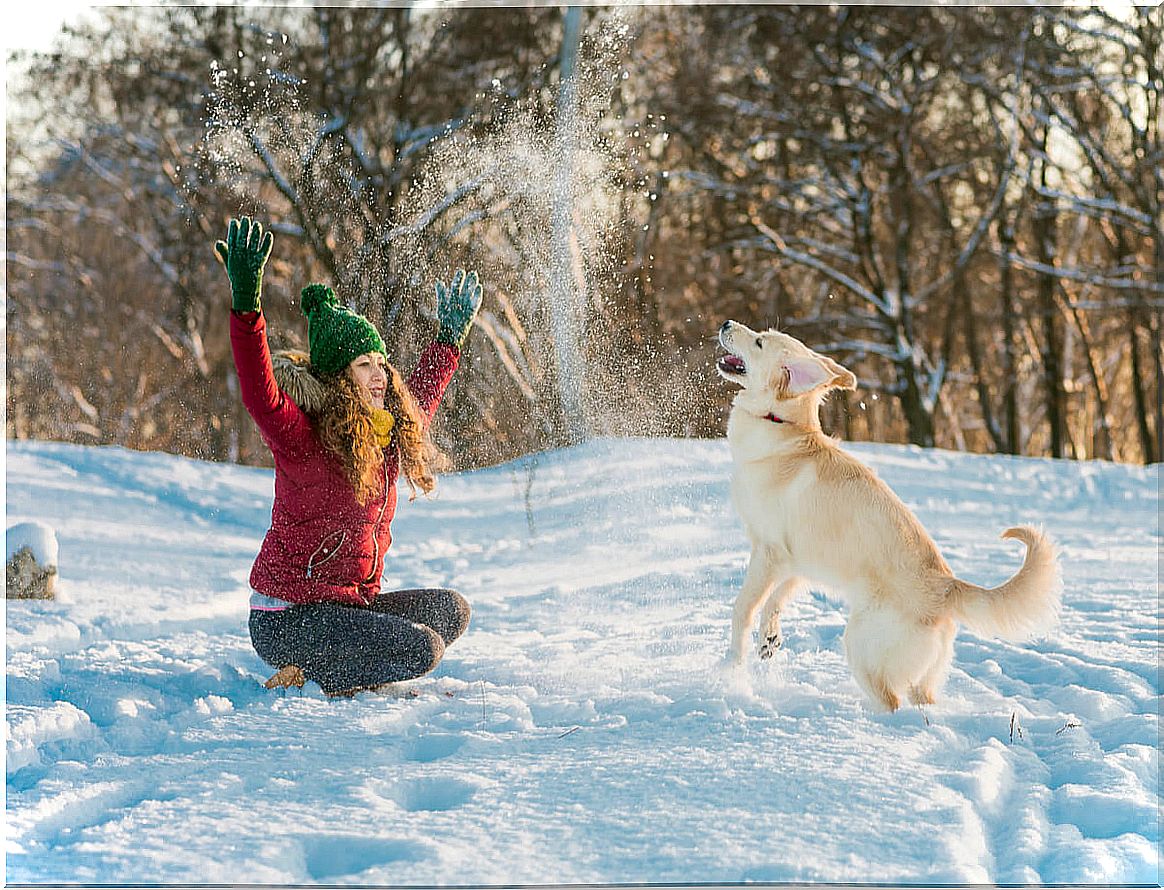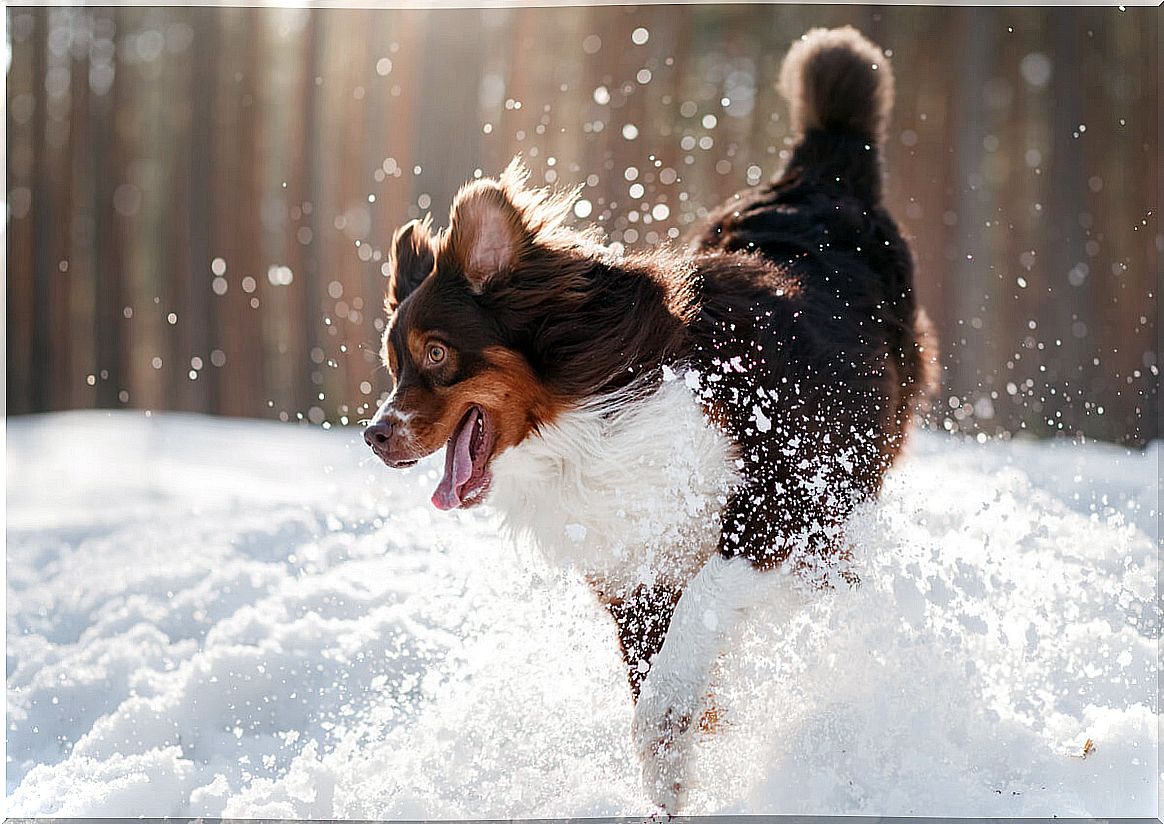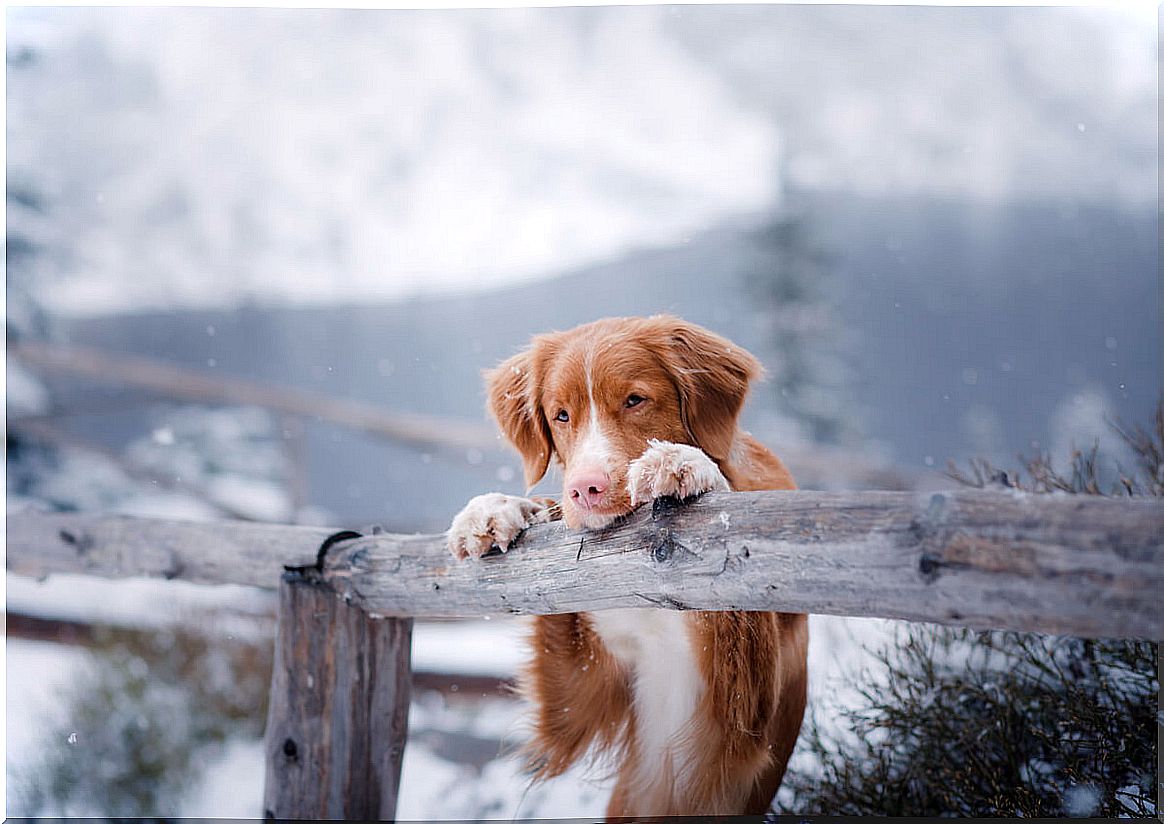How To Walk With A Dog In The Snow?

In some places the snow has come — and in many places to stay — but this is no excuse for not taking the dog for a walk. Just as there are a number of recommendations to combat heat in animals during the summer months, you can also find very useful tips for the winter.
It does not snow everywhere, but the low temperatures can affect your pet equally during the walk. So, you can extend all these tips that we are going to show you to the coldest months of the year.
At what temperature do dogs feel cold?
Do dogs get cold? Is it necessary to put on coats and raincoats? Dogs have fur on their bodies, which they molt twice a year — spring and fall — to prepare for changes in temperature. The main function of hair is to protect the skin.
Except for the hairless breeds – Chinese Crested and Xoloitzcuintle , among others – all dogs have 2 different hair layers : the primary or covering hair and the secondary or undercoat. The first type acts as a defense and the secondary hairs shelter the animal. This is one of the main reasons not to shave dogs at any time of the year.

Matter of races
Each breed can have different varieties of undercoat. There is a lot of variety on this front and, therefore, knowing the type of hair that the animal presents gives a lot of information about its more specific care. For advice, you can ask any specialized dog groomer about this issue.
Under these layers of hair, there is a layer of fat that acts as a thermal insulator, so that the natural coat of the dog by itself is already much more resistant to cold than our bare skin. Thus, the answer to the question of whether a dog needs a coat is the following: it depends.
In low temperatures, small dogs or those with short and fine hair will feel cold earlier than larger ones, which have a thicker layer of hair and fat insulation.
With artificial selection, breeds that are not usually cold have been achieved, thanks to a very dense coat and natural fat reserves. Examples of this are the Saint Bernard, the Tibetan Mastiff, the Alaskan Malamute or the Husky.
Age is also a determining factor in sensitivity to cold. Puppies and older animals can suffer more from temperature changes than young adult dogs.
How to detect cold in dogs
Dogs can feel cold after a temperature threshold, which will depend, as we have said, on the size and coat of the animal. We can observe certain signs that indicate cold in dogs, among which are the following:
- Tremors .
- Stooped posture.
- The animal wants to go home quickly.
- The dog does not interact in a normal way with other dogs or its own environment during the walk.
Today you can choose from an incredible variety of pet coats, raincoats, scarves and blankets. All these items are adapted to the size and type of accessory with which the dog usually goes for a walk — collar or harness—, so it is worth buying one of them when temperatures drop.
Tips for going to the snow with your dog
Going to the snow with your dog can be quite an experience, as many dogs enjoy jumping and running in the snow. If you have the opportunity to do so, do not hesitate, but first we advise you to follow a series of recommendations:
- If necessary, put a coat on: the most comfortable are those warm inside and with a waterproof exterior, to prevent the animal from ending up soaked after the walk.
- Be careful with your pads: there are protective creams to protect or repair the pads that you can easily apply before or after the ride to take care of the legs after contact with ice. These also serve for regular care of the pads or contact with the asphalt, which tends to get very hot in summer.
- Don’t let it eat snow: Many dogs tend to eat large amounts of snow when they walk through a snowy area and often vomit.
- Dry your pet after the walk: when you return home, remove the pieces of ice that are embedded between your fingers and your dog’s hair. It is not advisable to leave the coat wet. You can also give him a hot bath and use the dryer.
- The dog must be identified: if you usually release your pets, always remember to carry them identified to facilitate their rescue in case of loss.

Walking with a dog in the snow can be a lot of fun, but you do need to take certain precautions. Remember to bundle him up if necessary and keep his hair healthy and strong throughout the year.









